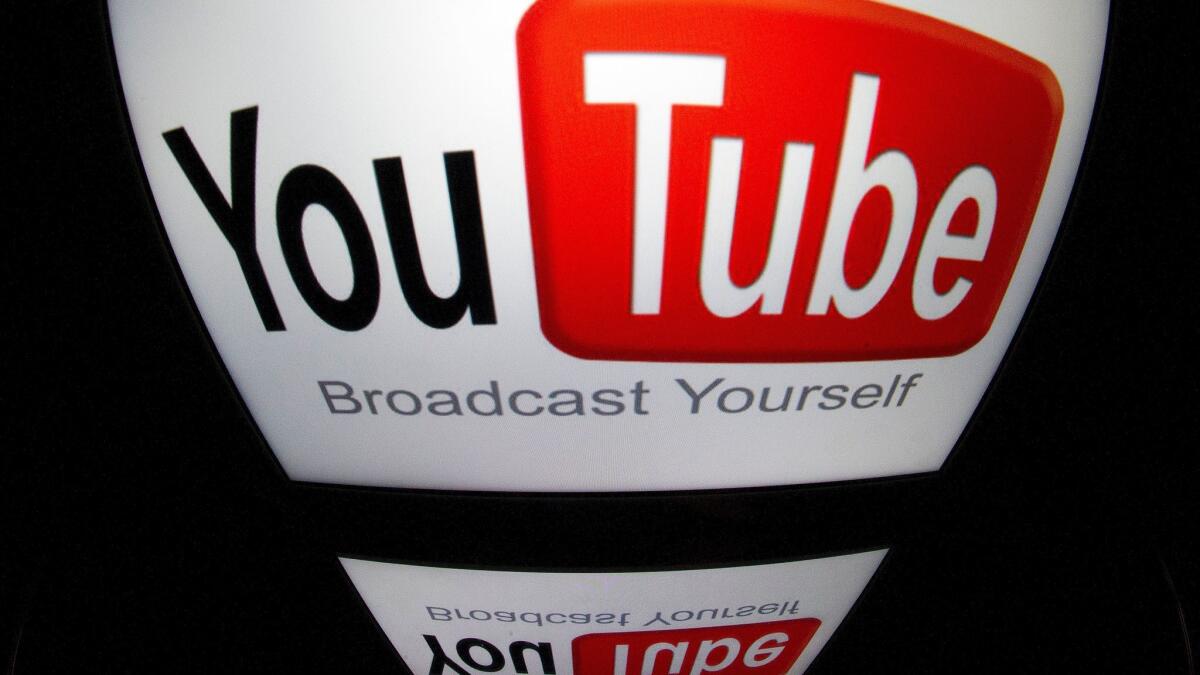Hey, star-struck. Making it on YouTube isn’t easier than making it in on the silver screen

- Share via
Do your children dream of YouTube stardom? Do them a favor: Crush that ambition now.
New research out of Germany billed as among the first to review the chances of making it in the new Hollywood shows a vanishingly small number will ever break through — just like in the old Hollywood.
In fact, 96.5% of all of those trying to become YouTubers won’t make enough money off of advertising to crack the U.S. poverty line, according to research by Mathias Bärtl, a professor at Offenburg University of Applied Sciences.
Breaking into the top 3% of most-viewed channels could bring in advertising revenue of about $16,800 a year, Bärtl found in an analysis for Bloomberg News. That’s a bit more than the U.S. federal poverty line of $12,140 for a single person. (The guideline for a two-person household is $16,460.) The top 3% of video creators of all time in Bärtl’s sample attracted more than 1.4 million views per month.
“If you’re a series regular on a network TV show, you’re getting a good amount of money,” said Alice Marwick, an assistant professor of communications at the University of North Carolina at Chapel Hill. “Yet, you can have half a million followers on YouTube and still be working at Starbucks.”
Children born after YouTube was created in 2005 have grown up surrounded by videos churned out by performers such as Jake Paul, PewDiePie and Zoella, whose clips about their daily lives, video gaming and fashion, respectively, have turned YouTuber into a popular career goal.
One in three British children ages 6 to 17 told pollsters last year that they wanted to become a full-time YouTuber. That’s three times as many as those who wanted to become a doctor or a nurse.
Tom Burns, founder of Summer in the City, an annual British YouTube convention, said his cousin wanted to skip college to become a full-time YouTuber. “I almost flipped out, because I was like, ‘No, that’s the dumbest thing you can say,’” he said. “You can’t guarantee you’ll be able to do it as a job.”
Of course, the goal is to be a superstar. The top 1% of creators garnered from 2.2 million to 42.1 million views per month in 2016, Bärtl’s research shows. Those top-tier performers often earn side money through sponsorships or other deals, so calculating their earnings is more complicated.
YouTube’s ad rates are opaque and have changed over time, but Bärtl used an income of $1 per 1,000 views for an average YouTuber to calculate his earnings estimates. That rate is a good rule of thumb, said Harry Hugo of the Goat Agency, an influencer marketing firm in London. “I’ve seen as low as 35 cents per 1,000 views and work with some YouTubers who can earn $5 per 1,000,” he said.
A YouTube spokeswoman said the company is working to help people make more money, such as through sponsorships and a feature that lets viewers pay to have their comments featured. The number of channels earning six figures is up 40% year over year, the spokeswoman said. “We continue to see tremendous growth with creators on YouTube,” the spokeswoman said in an email.
In the U.S., the median hourly wage earned by actors is $18.70, according to the Bureau of Labor Statistics, which doesn’t report annual salaries for actors.
People trying to make it on YouTube have long complained the company protects a handful of stars, promoting them at the expense of the masses struggling to break out.
The imbalance is huge and becoming worse, according to Bärtl’s research: In 2006 the top 3% accounted for 63% of all views. Ten years later, the top YouTubers received nine in every 10 views, he found. The bottom 85% of those who started posting in 2016 got a maximum of 458 views per month.
There are hardly any barriers to entry: no auditions, no studio executives to impress, no need to be physically anywhere close to Hollywood. Theoretically, you just need a phone and an internet connection. Still, professional classes and boot camps have opened. Summer camps in the U.S. can cost $569. Buying the same equipment used by Casey Neistat, a popular YouTuber, would cost $3,780.
Asher Benjamin, a 19-year-old computer science student at Grand Canyon University in Phoenix, has spent $460 on a camera and tripod for his YouTube channel, where he uploads a video every day.
He has published more than 150 daily video diaries, or vlogs, that are essentially a catalog of his life at college: brief updates about things he’s done, his plans for the day, what he’s eaten, with appearances from his roommates. “I don’t know where it’s going to end up,” he said. “It’d be cool if I could take the path others have and make it into a job, but we’ll have to see.”
Benjamin spends an hour a day editing his videos and holds out hope his postings could become a career, even after he heard the odds. “I think if I keep uploading, there’s no reason I shouldn’t be able to make it a career,” he said. He recently hit 100 subscribers, up from 71 at the start of the year.
It’ll only get more difficult, YouTube announced earlier this month. Viewers must have watched 4,000 hours of their videos in the last year and YouTubers need 1,000 subscribers or more to be eligible to make money from advertising.
There’s one route that is easier to crack. If your child is still intent on trying his luck, tell him to pick up a joystick. Gaming YouTubers — such as 28-year-old Felix “PewDiePie” Kjellberg, who has 60 million subscribers — have a 14 times better chance than traditional vloggers, who often upload to the People & Blogs category on the website, Bärtl’s research shows.
Stokel-Walker writes for Bloomberg.
More to Read
Inside the business of entertainment
The Wide Shot brings you news, analysis and insights on everything from streaming wars to production — and what it all means for the future.
You may occasionally receive promotional content from the Los Angeles Times.










